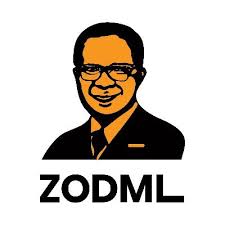On Social Interactions and Building Relationships Through Communication
With the several digital means of communication, the gap between physical human relationships has thinned, if not totally blurred. Yet, this does not delineate the place of social interactions and relationship building. This is because the average human can never be an island; therefore, in our daily activities, it is fundamental that we interact with people and the broader society and also establish communications that can bloom into tangible relationships. It is the law of human nature that we coexist with one another. More indigenously, the African concept of Ubuntu highlights our interconnectedness, without which we cannot thrive as a society.
Since primitive times, beings have shown enormous capabilities in establishing compatibility with one another. From the undocumented ages of our hunter-gatherer ancestors, there has been a consistent epoch of relationship building without which we could not have approached this level of civilization. Also, most tribes and people of Africa were formerly a scattering of decentralized people who traveled through different locations, established relationships, and further came to a coalition of centralized autonomies from which we borrow as ethnic identity. This underscores how much meaning people can create through relationships and communication. Hence, there are different theories for social interactions and how different people construct meaning through relationships.

Key Concepts of Interaction Theory
There are different theories of social interaction, and this entails the different modes and media through which people interconnect with one another. They include:
1. Symbolic Interactionism
This theory was popularly pronounced by Herbert Blumer. It emphasizes the role that symbols, including language, gestures, and objects, play in helping our understanding and interactions with others. Blumer noted three essential premises to this theory, which are
- People act based on the meaning they ascribe to things.
- These meanings arise from social interactions
- Meanings are interpreted and adjusted through ongoing interaction.
2. Meaning Construction
This theory establishes that individuals resolve to actively interpret symbols and cues presented by others and in their environment, coming at ends to personal conclusions that determine their actions.
3. The Self
This social interaction theory instigates the idea that the validation of the understanding of ourselves is dependent on the perspective of others.
Through these theories and many more, it can be understood that the process of human interaction differs and is largely diverse, but at every point and in all of these theories, there is a pertinent need for the connection with a significant other or a group of people. Human beings, even animals, create meanings for various reasons. It is the same reason a child will most likely embrace the most familiar face that is often available and why a hungry dog will offer domestic dedication to the owner who feeds it. We are not likely to be less different. In life, most of the relationships we have built originate from meanings we have created with people as friends, enemies, lovers, role models, teachers, et cetera. However, from birth, we have perpetuated the need to interact beyond this close circle of relatives. That is why our arsenal of relationships continues to grow as we age, every one of us leaving subtle influences on the other, which ultimately shapes whoever we may become.





